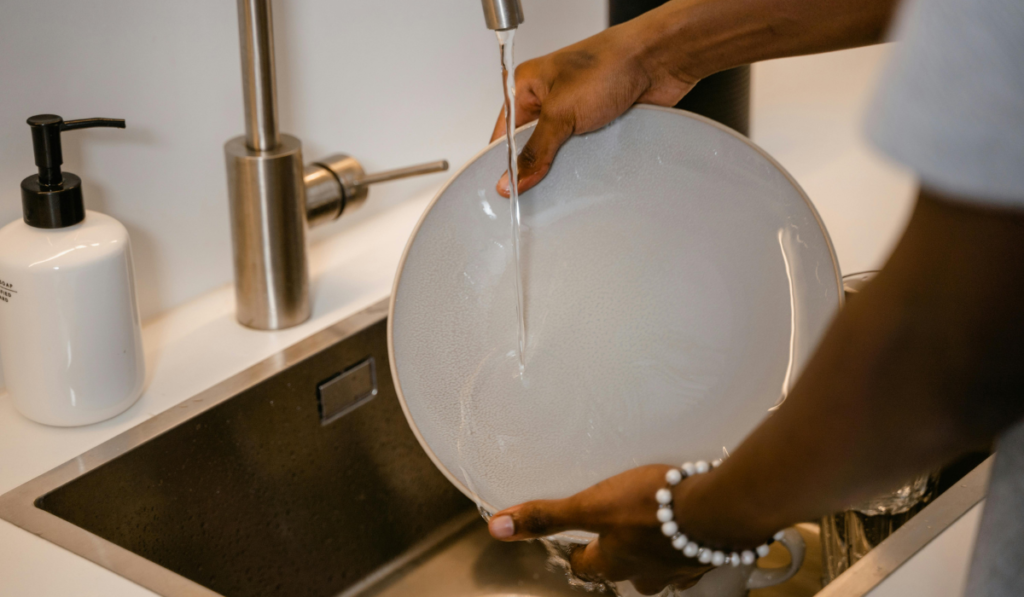The top of the plate where food is placed, commonly referred to as the food-contact surface, is an essential part of the dining experience. While it may seem like a simple detail, the food-contact surface plays a significant role in food presentation, hygiene, and functionality. In this blog, we’ll explore the importance of this often-overlooked aspect of tableware and provide actionable tips for maintaining its quality.

What Is the Food-Contact Surface?
The food-contact surface is the flat, smooth part of the plate where food is directly placed. This surface must meet high standards in both aesthetics and safety. It is specifically designed to enhance food presentation while ensuring it remains safe for consumption.
A well-maintained food-contact surface can elevate the dining experience, whether at home or in a professional setting, making it an indispensable aspect of tableware.
Key Features of the Food-Contact Surface
- Hygiene and Safety
The surface must be free from cracks, chips, or scratches to prevent contamination. Damaged plates can harbor bacteria, posing risks to health. - Design and Aesthetics
The plate’s surface plays a pivotal role in how food is perceived. Clean and smooth surfaces highlight the artistry of the dish, while textured or patterned plates add a creative touch. - Functionality
A properly designed surface ensures food stays in place and portions are presented evenly, contributing to a practical dining experience.
The Importance of Maintaining the Food-Contact Surface
Whether you’re a chef, a restaurateur, or a home cook, maintaining the food-contact surface is vital. Here’s why:
- Enhanced Food Presentation: A spotless and well-designed surface ensures the food looks visually appealing.
- Prolonged Plate Lifespan: Proper care prevents damage, preserving the plate’s usability and appearance.
- Hygiene Assurance: Regular cleaning and inspection reduce the risk of bacterial growth, ensuring the health and safety of diners.

Tips for Caring for the Food-Contact Surface
- Regular Cleaning: Wash plates with warm water and a mild detergent immediately after use to remove food residues effectively.
- Avoid Harsh Scrubbing: Use soft, non-abrasive sponges to prevent scratching or damaging the surface.
- Inspect for Damage: Check plates frequently for cracks, chips, or stains. Damaged plates should be discarded to maintain hygiene.
- Proper Storage: Stack plates carefully to avoid scratches. Use soft liners between plates if necessary.
- Periodic Sanitization: For added safety, occasionally sanitize plates using food-safe solutions, especially in commercial settings.
Common Materials for Food-Contact Surfaces
Different materials are used for creating food-contact surfaces, each with unique benefits:
- Porcelain and Ceramic: Non-porous and highly durable, ideal for both casual and fine dining.
- Glass: Elegant and easy to clean, though prone to breaking.
- Melamine: Lightweight and durable, suitable for casual or outdoor dining.
Each material requires specific care to maintain its quality and ensure it remains safe for food use.
FAQs About Food-Contact Surfaces
1. Why is it important to replace damaged plates?
Damaged plates with cracks or chips can harbor bacteria, making them unsafe for serving food.
2. How often should plates be sanitized in restaurants?
In commercial settings, plates should be sanitized after every use to meet hygiene standards.
3. Can decorative plates be used for serving food?
Decorative plates should only be used if their surface is food-safe. Always check for certifications or labels indicating food safety.
Conclusion
The food-contact surface is more than just the top of a plate—it’s a critical aspect of the dining experience. Its condition directly impacts food presentation, hygiene, and the overall impression of a meal. By understanding its importance and following proper care guidelines, you can ensure that every meal served is both beautiful and safe.
Whether at home or in a professional setting, maintaining high standards for your plates’ surfaces reflects your commitment to quality and excellence in dining.













Discussion about this post